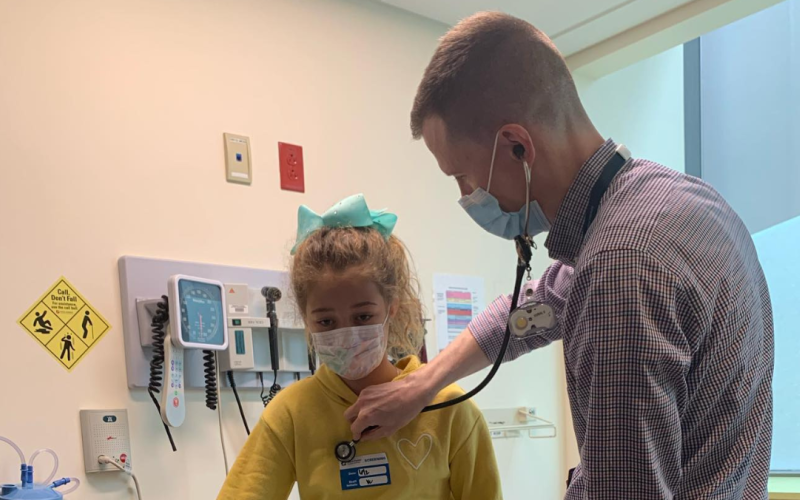
By: Trish Adkins
For weeks, Lakelynn Markham complained about a “boo-boo” in her arm. The pain interrupted her sleep, but X-rays revealed nothing; her parents were stumped. The pediatrician suggested that 3-year-old Lakelynn was trying to avoid bedtime.
But then Lakelynn stopped using her arm.
Trusting their intuition, her parents took Lakelynn to an orthopedic specialist. This time the X-ray showed a tumor wrapped around the nerves of her right arm and shoulder.
The diagnosis: a rare form of sarcoma.
Sarcomas make up 15% of all childhood cancer diagnoses and arise from the connective tissue in the body. Lakelynn’s sarcoma was rare and inoperable. Her local team was working through a treatment plan, but there were not many options.
Then the results of genetic sequencing revealed that Lakelynn’s tumor harbored an NTRK gene fusion, a well-described mutation that can drive the development of a variety of pediatric cancers. There was a clinical trial open (led by ALSF-funded researcher and Scientific Advisory Board member Dr. Steven DuBois) at Dana Farber Cancer Institute that used a targeted, inhibitor drug to treat patients with the NTRK fusion. The only problem: Lakelynn lived near Raleigh, North Carolina and the trial was in Boston.
Her family found a way to make it work. Lakelynn traveled to Boston to begin treatment, and her tumor began shrinking.
The drug that helped Lakelynn — larotrectinib — was approved by the FDA in 2018. Studies continue on the drug, but it has shown promise as a frontline treatment for another type of pediatric sarcoma called infantile fibrosarcoma.

There are more than 70 different subtypes of sarcoma. Osteosarcoma and Ewing sarcoma — both bone sarcomas — are two of the most common types. Soft tissue sarcomas — like rhabdomyosarcoma — form in the muscles and other connective tissues in the body. Here are five more sarcoma facts:
1. Sarcomas can occur anywhere in the body.
Sarcomas form when there is a mutation in the connective tissue of the body, and connective tissue is everywhere. It forms in bones and muscles and tendons and cartilage.
2. Osteosarcoma and Ewing sarcoma are particularly hard to treat after relapse.
Bone cancers typically spread to the lungs. When osteosarcoma spreads to the lungs, cure rates drop from 60% to 30%.
3. Up to 1,700 children will be diagnosed with some form of pediatric sarcoma in the U.S. this year.
For most of these kids, frontline treatment hasn’t changed in 40 years.
4. Up to 75% of children with pediatric sarcoma will be alive five years after diagnosis.
This lags behind other childhood cancer survival rates, like pediatric acute lymphoblastic leukemia which has a 90% cure rate.
5. Research works and more research is needed.
Today, Lakelynn is alive and enjoying childhood because of research. Alex’s Lemonade Stand Foundation continues to invest in pediatric sarcoma research through its grant programs, including the Crazy 8 Initiative. Three Crazy 8 projects focus on sarcoma research, including the project led by Dr. Heinrich Kovar. Dr. Kovar is working to discover the origins of bone sarcomas and develop tumor models that can be used to test targeted drugs to treat this deadly pediatric cancer.
“You cannot just neglect these problems and say, okay, we’ve tried for such a long time and we can’t do anything about it. That’s not helping the kids. You have to take the risk,” said Dr. Kovar.
Updated July 2024
First Published:

